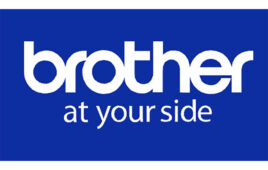 Brand loyalty begins when children are small and can impact the shopping habits of their family.
Brand loyalty begins when children are small and can impact the shopping habits of their family.
A new report by Packaged Facts, “Kids Food and Beverage Market in the U.S., 8th Edition,” children often make brand selections for a family and have a disproportionate say in household grocery purchases and decisions.
In fact, according to the report, more than a quarter of parents (26%) learn about a new product as a request from their child. Kids aged 6+ in particular wield a considerable amount of purchasing power, but in reality brand loyalty is nurtured in children even younger.
“Children under age six are just as important to marketers as older children are because life-long dietary habits are established during this time period and brand loyalty begins,” said David Sprinkle, research director, Packaged Facts. “This suggests industry players should focus on product development designed to capture younger kids and gain allegiance from parents earlier to keep them involved with the brand throughout childhood.”
Ultimately the items that end up in parents’ shopping carts stem from an assortment of factors. Chief among them are:
What brands or products are recognizable to the children?
What do parents deem healthiest and most nutritious for their children?
What foods do kids themselves enjoy eating?
What’s recommended by parents’ peers either directly or through social media and online reviews?
The importance of this second factor—what foods are perceived as healthier options for children—can’t be understated.
According to the “Shopping for Health 2016” report from the Food Marketing Institute and Rodale, a product’s healthfulness for children influences 91% of parents’ food and beverage purchases. On a related note, Packaged Facts found that nearly half (46%) of parents consider nutritional value as a top influencer. These findings indicate the degree to which health and diet are influencing choices within the market. As Packaged Facts found in the report, healthy innovation is emerging within every segment of the kids food market, even among categories not typically associated with health, like sweet and salty snacks.
“Companies or brands dedicated to eliminating or reducing unhealthful ingredients will find a strong following of parents, particularly parents of the boomer generation or those with kids aged 6-11. Likewise, the hidden veggie trend is most important to Millennial parents—reflecting this demographics’ desire for functional foods,” said Sprinkle.
Now in its eighth edition, Kids Food and Beverage Market in the U.S. follows in the tradition of its predecessors by offering all the essential insights, trends, data, and projections necessary to thrive in this complex and competitive market segment. For more information on Kids Food and Beverage Market in the U.S., 8th Edition or to purchase the report visit: http://www.packagedfacts.com/Kids-Food-Beverage-9896631/.




